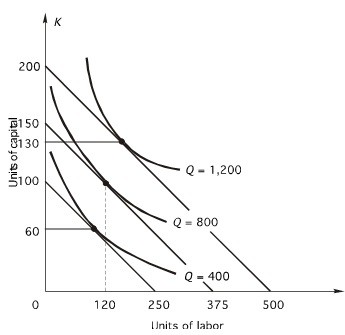If $1 is worth .8 Canadian dollars, then 1 Canadian dollar is worth:
A. $1.25.
B. $1.80.
C. $0.20.
D. $0.80.
A. $1.25.
You might also like to view...
In Figure 3-6 above, income and planned expenditure are equal at
A) point J. B) point K. C) point L. D) all of the above.
The national debt is:
a. the difference between a nation's exports and imports of goods and services. b. the sum of the personal debt of all citizens in the United States. c. the cumulative effect of all past budget deficits and surpluses of the federal government. d. equal to the current size of the budget deficit.
The Condorcet paradox shows that there is no scheme for aggregating individual preferences into a valid set of social preferences
a. True b. False Indicate whether the statement is true or false
Refer to the following figure. The price of capital is $50 per unit: How many units of labor should the firm use in order to produce 400 units of output at the least cost?
How many units of labor should the firm use in order to produce 400 units of output at the least cost?
A. 100 B. 105 C. 110 D. 115